Photo by Willy Eddy
Product Design, UX / UI, Motion
Design an educational talking toy for children.
Reading is foundational skill for almost all human learning. The act of reading is a fairly mechanical process on the neurological level. This makes it a great skill for a smart toy to teach, because positive progress can be easily evaluated by a machine intelligence.
Create a talking toy that uses principles of what works in education, while avoiding pitfalls, that helps 4-to-7-year-olds develop reading skills.
Learning How We Learn
My partner and I began our research process by consulting Matt, a Senior Software Engineer at EnLearn. Matt helped us identify guiding principles for the project based on proven educational concepts, as well as some pitfalls and limitations of educational software.
Humans learn most effectively if we can make connections to something we already know. When we encounter something unknown that's way outside our knowledge, people are less likely to learn it successfully, and may become overwhelmed.
A major mismatch between human and machine intelligence is our ability to understand context. This is a challenge for smart toys because it's hard to train a machine to recognize what a child is not grasping. Kids, on the other hand, are pretty good at picking up on context, which means they're able to spot ways to game a system.
Most kids learn to read sometime between age 4 and 7. Studies have shown that a child’s reading level after third grade is the second strongest predictor of whether or not they will graduate high school. For years, the rate of US students reading below grade level at this critical point is 30%.
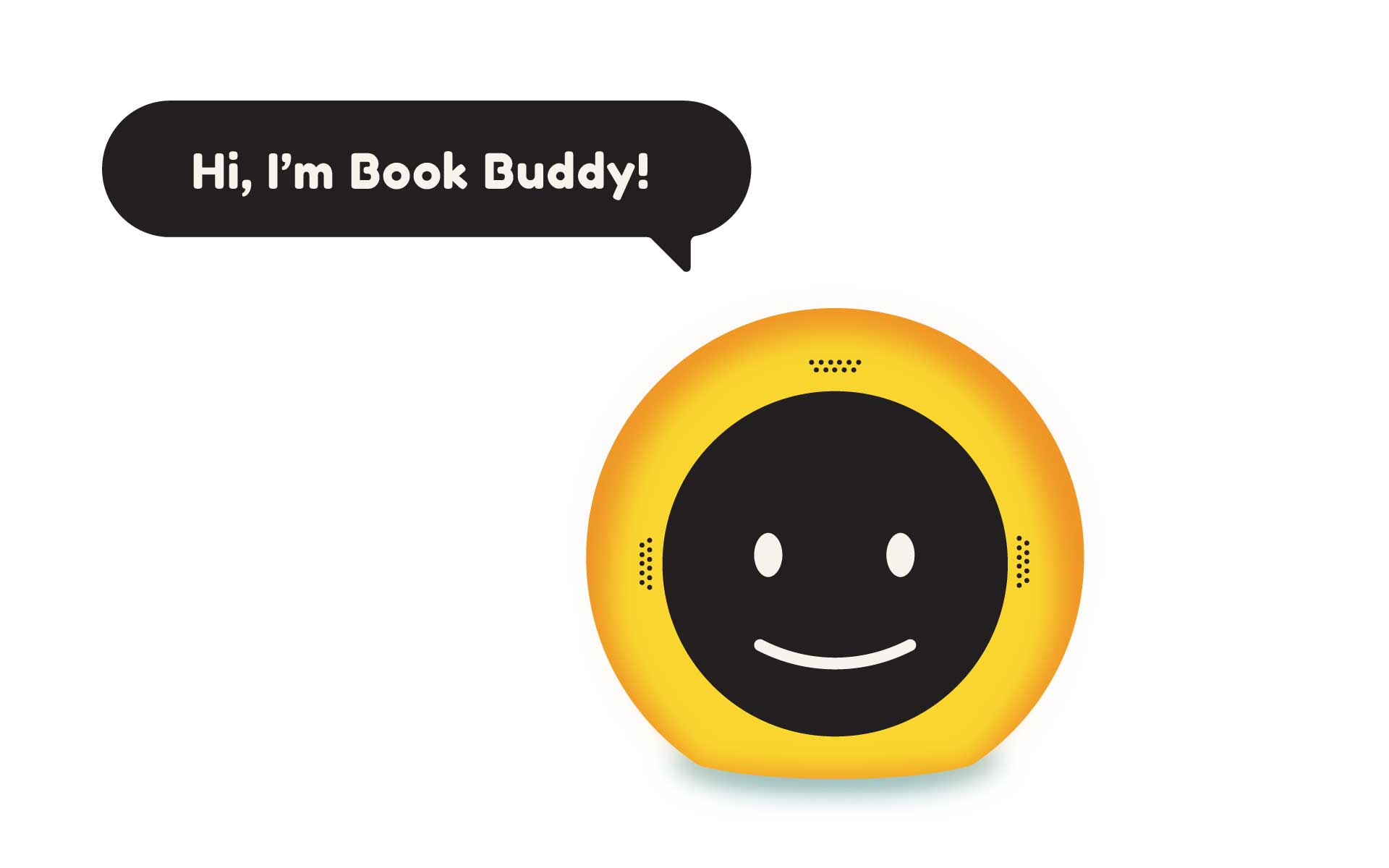
Book Buddy is a learning companion for early readers, progress tracker for parents and diagnostic tool for educators.
Guided by our research, we created the concept for Book Buddy, a learning companion for early readers. Programmed with knowledge of a Learning Library, Book Buddy can listen along as the child reads aloud, assisting the reader when needed. Parents and educators can track reader progress via the companion app, which can suggest more books that are suited to their child’s optimal challenge level.

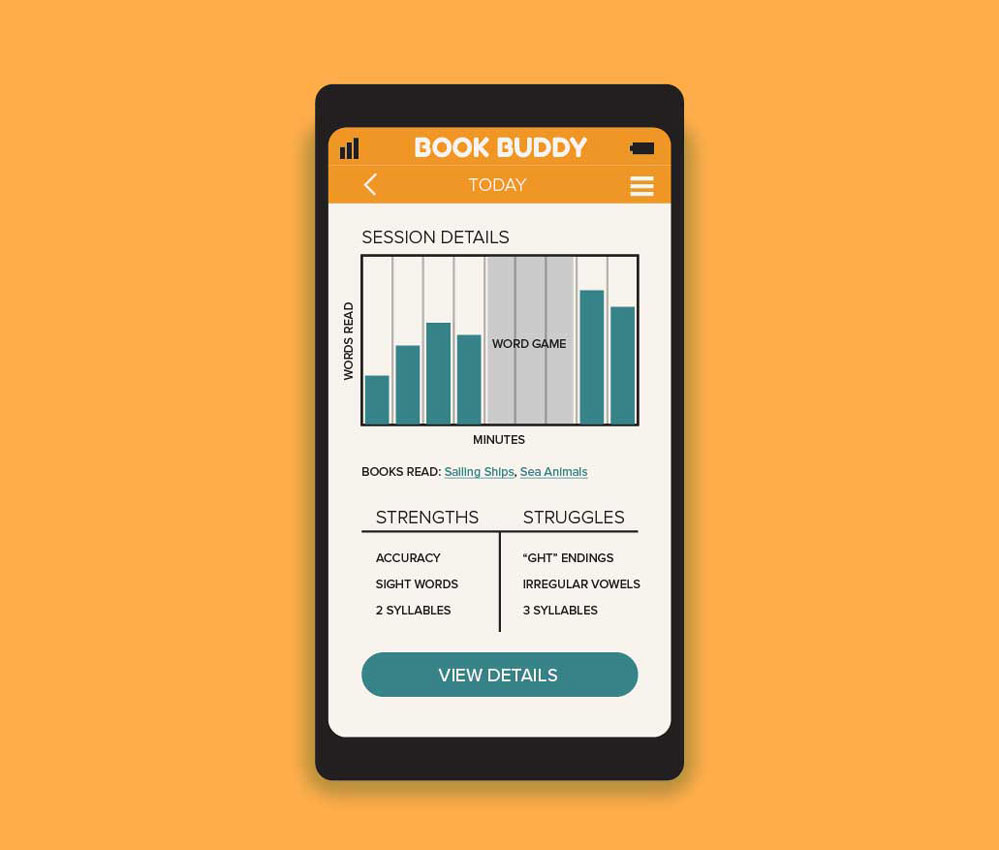
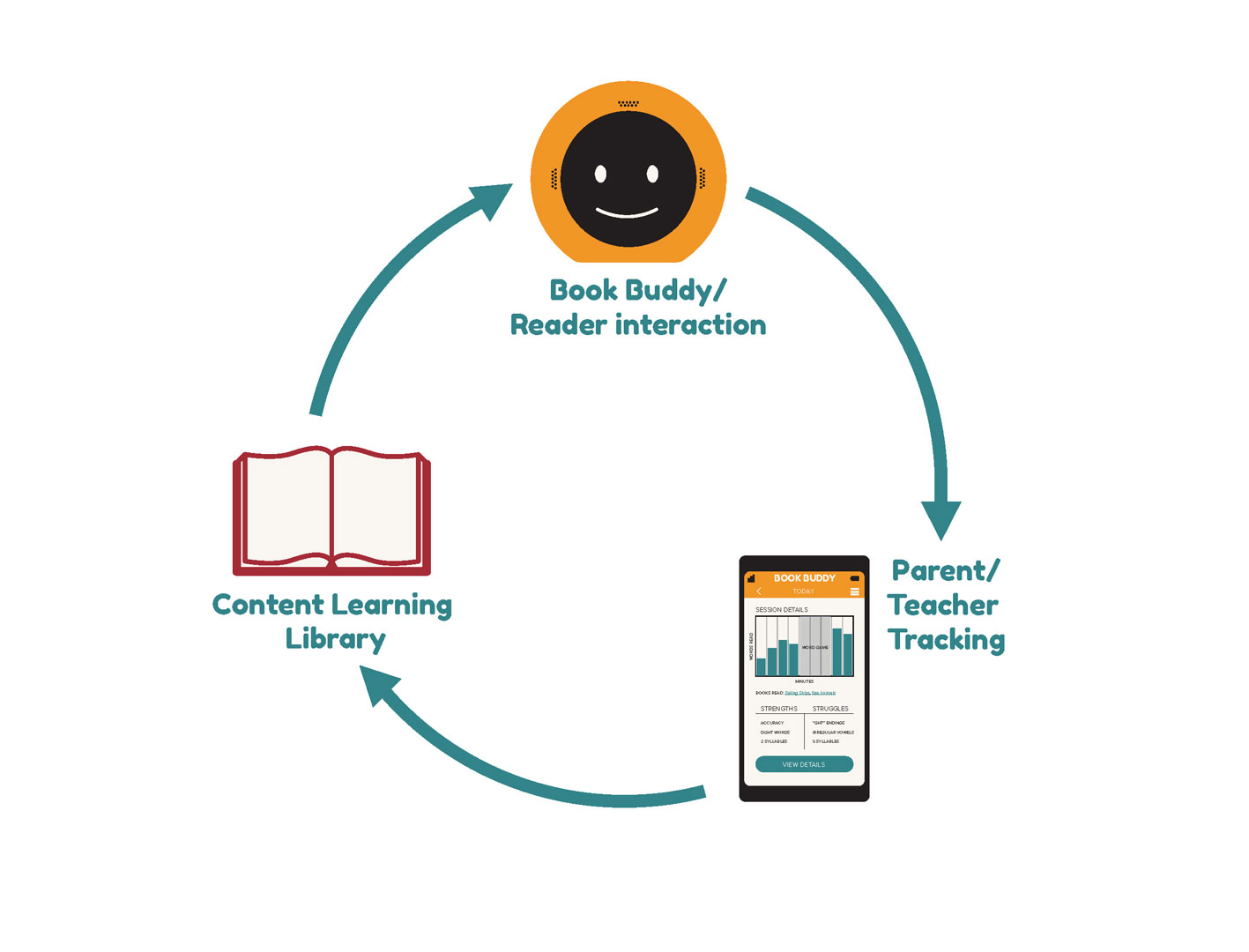
In order for Book Buddy to be a successful product, it must serve the needs of three main users groups:
Readers who interact with the toy device
Parents and Educators who use the companion app to track progress
Publishers who provide the content for the Learning Library
In developing our concept, Willy and I sketched the general wants, needs and fears of these groups, then factored those into a MSCW analysis model to define the architecture of the Book Buddy ecosystem and generate features for the Book Buddy device and companion app.
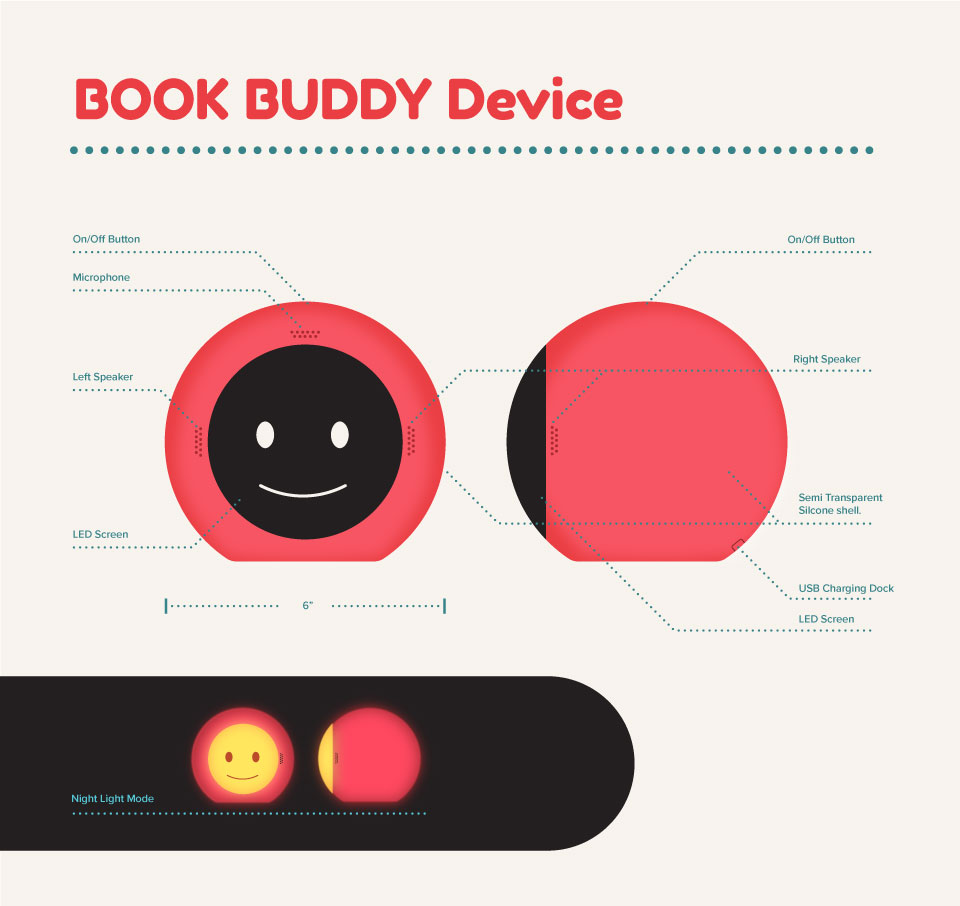
A Little Light (for) Reading
We chose a spherical shape for the device itself; safe for young kids without being too infantilizing for our older readers. Book Buddy’s body glows when the device is on, so Book Buddy can also be a reading lamp.
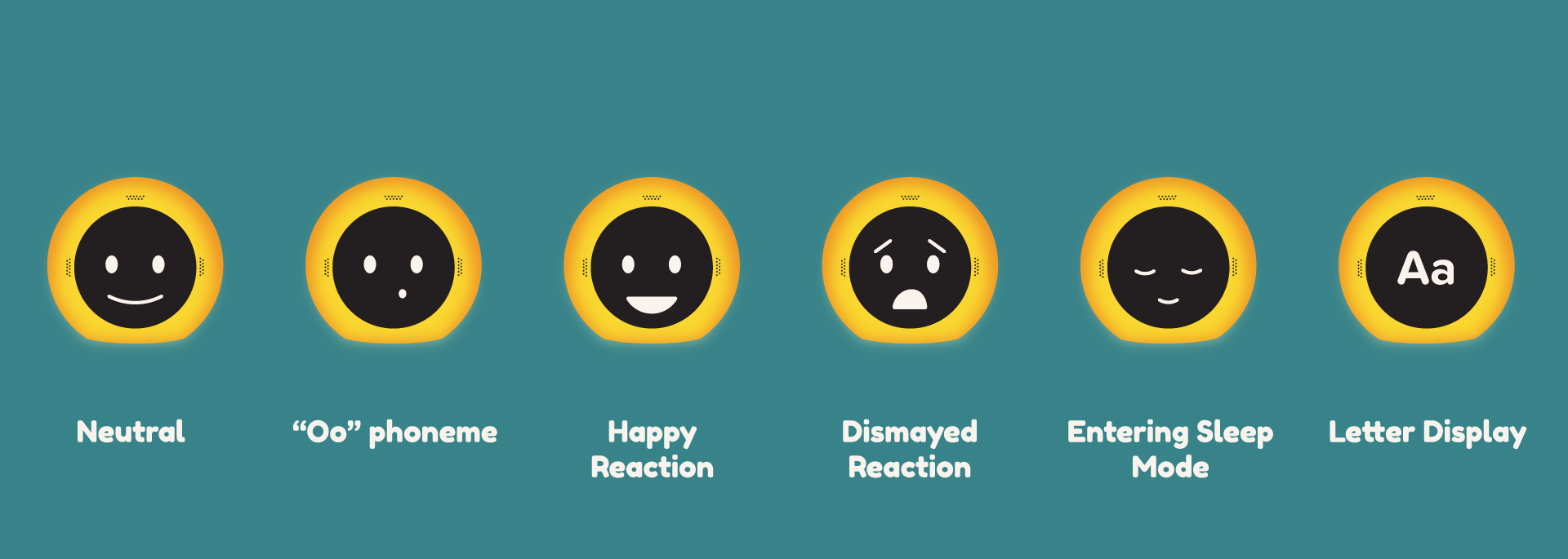
Expressive Face Interface
BookBuddy’s facial expressions react to story and conversation. When sounding out words, Book Buddy’s mouth forms simple phonemes which help the user shape the right sound. Book Buddy’s face can also display letters in order to help the user recognize them.
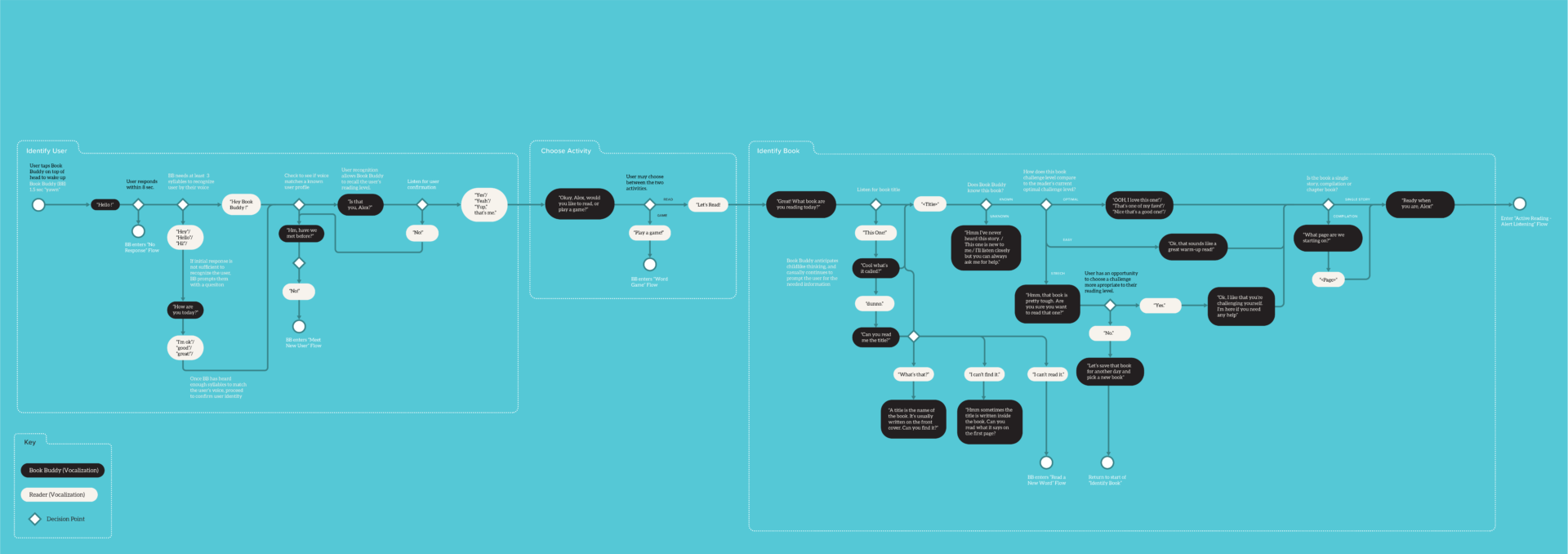
Let the Conversation Flow
In designing the voice interaction, we focused on the challenge of anticipating “childish” thinking, and steering interactions in order to be productive. Since Book Buddy can’t actually make the reader do anything, we encourage whatever the reader wants to read that day, while subtly steering them toward material at their optimal challenge level in order to best develop their skills.
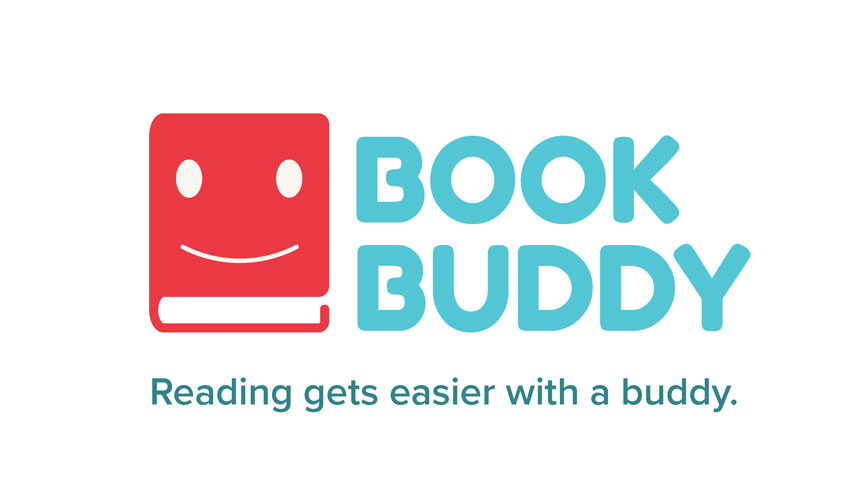
Visual Language for a Conversational Companion
Willy created a logo and branding for the project, built around a design system I developed to convey approachable fundamentals.
Telling our Story to an Audience
While Willy designed a landing page and print materials, I focused on creating an explainer video targeted at parents. I also created a physical protoype of the device to be displayed along with our other promotional materials.